| Home > Living in China > Art |
Chinese Treasures Returned from Overseas
As witness of Chinese culture and custom, countless treasures came into being and faded away in the river of 5000 years long history . And Chinese treasure suffered great lost during the last 200 years. It's time for them to take a long way home.
With a smiling, gracious and auspicious look, a stone sculpture stood guard quietly at the front door of the exhibition of “Chinese Treasures Returned from Overseas,?which was held from June 12 to July 10, Beijing.
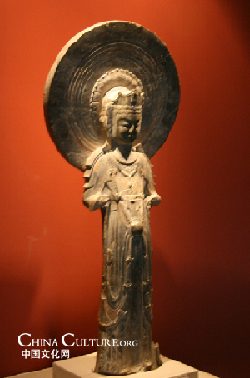
As its name “Returned Bodhisattva?suggests, the over-one-meter-high goddess made during Northern Wei and Eastern Wei (386-550) has experienced twists and turns ever since its discovery back in 1976 in Boxing, Shandong Province. It was stolen in 1994 and brought back to China in January 2008. During the 14 years away from homeland, the sculpture once showed up in Britain and later was purchased by Japanese MIHO which exhibited it to the public in 2000.
Different from the Bodhisattva’s composure, the painted pottery horse on display looked sturdy and bold, ready to gallop forward. This Han (206 BC-220 AD) masterpiece was smuggled to Sweden in 1995 and then its collector submitted it to the Museum of Far East in Sweden, which decided to return the horse to China in 2004 in accordance with International Council of Museums' Moral Norms for Employees of Museums.
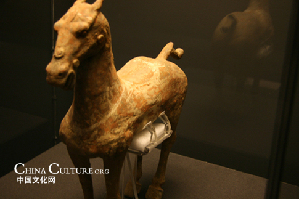
Six naked pottery figurines returned from the United States were also among the exhibits. Made in the Western Han dynasty (206 BC-24 AD), they were illegally unearthed in 2001 in the eastern outskirts of Xi’an, Shaanxi Province, and then sold overseas. One year later, the U.S. Customs detained and sealed up the six figurines before they were going to be auctioned off by American Sotheby's. In June 2003, the lost relics finally returned home safely. Archeological research shows that these pottery figurines had wooden arms and were clad with fineries when buried two thousand years ago.
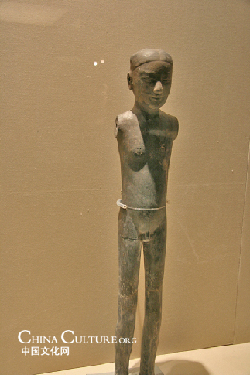
The most eye-catching exhibits were 156 pieces of Chinese relics which returned from Denmark this year. Mostly composed of pottery figurines made from Han (206 BC-220 AD) to Ming (1368-1644) dynasties, these masterpieces show how Chinese’s clothing style changed over the past two millenniums. Together with these pottery figurines are pottery poultries, domestic animals, houses, and furniture. In February 2006, the Denmark police found out and detained some suspicious foreign artistic treasures, including the 156 pieces of Chinese relics. The National Relic Bureau of China got the news and expressed the will to take them back. Two years later, after negotiations of China and Denmark parties, the Denmark court ruled that these Chinese relics should be returned to China.
Also on exhibit were 31 pottery figurines which showed up abroad and were purchased and donated to China’s government by overseas Chinese. They were from Shaanxi Hanyang Tomb, where Liu Qi (188 -141 BC), the fourth emperor of the Western Han Dynasty, and his queen were buried.
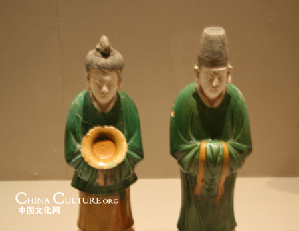
The exhibition itself is encouraging, as it demonstrates China’s determination to take back the treasures lost to smugglers and overseas art markets. Yet, the exhibits are simply a tiny part of those taken out of China ever since the opium war in 1840. According to statistics released from the UNESCO, about 1.67 million pieces of Chinese relics have been collected by two hundred museums across 47 countries, and those in the hands of individuals or unofficial organizations overseas might be ten times this number.
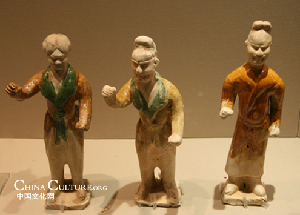
Taking all of them back home seems a daunting and almost-mission-impossible task though, China has attached great importance to the project. Cai Wu, Minister of Culture, attended the opening ceremony of the exhibition and awarded those who contributed a lot to help Chinese treasures returning home. Shan Jilin, Director of National Relics Bureau, said it’s agreed globally that cultural relic smuggling should be cracked down and efforts should be done to return relics to the home country. According to Shan, China has signed bilateral agreements with Peru, India, Italy, Philippines, Greece, Chile and Cyprus to prevent cultural relics from being stolen and smuggled.
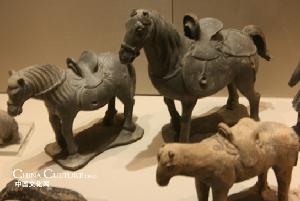
And for the future lets hope with increasing attention being paid to this black market that more cultural artifacts make their way home and can be appreciated by their native citizens and other interested parties.
Art
 more
moreClassic Chinese Handicraft:
Porcelain pillows, as classic Chinese handicraft,
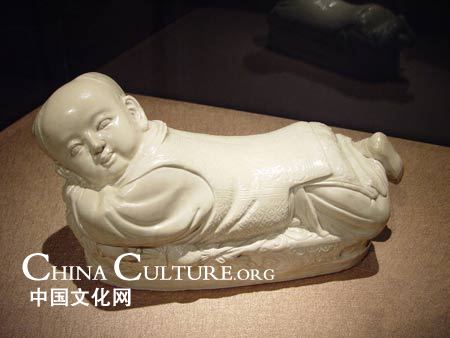
Chinese Treasures Returned from
As witness of Chinese culture and custom, countless treasures

The lost legacy: classical music
Accompany by the long history of China, Chinese classical music
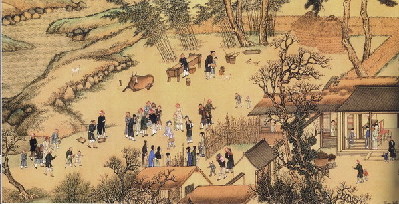
Customs
 more
moreChinese Kungfu
Kungfu Taste: Learn Martial Art in Shaolin Temple
The mention of Shaolin Temple conjures up images of a quiet and
Keet Kune Do will reappears on screen: BRUCE Lee and
The Legend of Bruce Lee is shot by China Central Television
The Road to the Olympic Games for Wushu
Wushu, also called kungfu, martial arts, is attracting more and more




 print
print  email
email  Favorite
Favorite  Transtlate
Transtlate 
